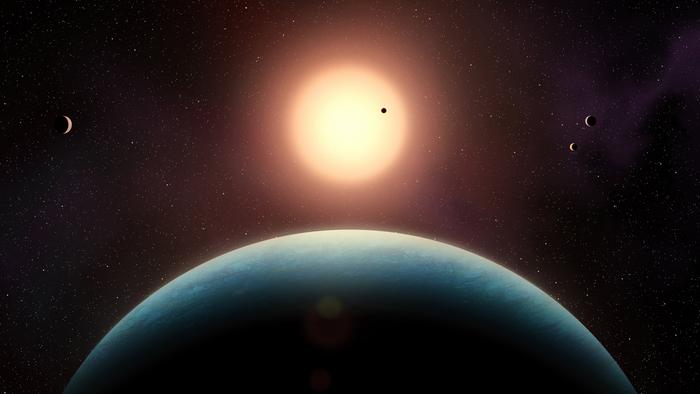What can planets orbiting red dwarf stars teach scientists about planetary formation and evolution? This is what a recently submitted study hopes to address as an international team of researchers investigated new data obtained about a four-planet system, along with the discovery of a fifth planet. This study has the potential to help researchers better understand the formation and evolution of planets orbiting red dwarf stars, the latter of which are smaller and cooler than our Sun.
For the study, the researchers used a combination of ground-based and space-based telescopes, to estimate the sizes and masses of four exoplanets that comprise the L 98-59 system, which is located approximately 35 light-years from Earth. While three of the planets were discovered in 2019 and the fourth planet was discovered in 2021, this is the first time researchers have been able to measure their sizes and masses.
For the planets discovered in 2019, identified as L 98-59 b, c, and d, the researchers estimated their radii to be approximately 0.837, 1.329, and 1.627 Earths, respectively. The radius of the planet discovered in 2021, planet e, was estimated using computer models at approximately 1.42 Earths. The masses of the four planets were estimated to be approximately 0.46, 2.00, 1.64, and 2.82 Earths, respectively.
To complement the new estimates, the researchers also discovered a fifth planet within the system, identified as planet f, with an estimated radius and mass of 1.43 and 2.80, respectively, with the radius being estimated using computer models similar to planet e. All five planets have estimated orbital periods of 2.253, 3.691, 7.451, 12.83, and 23.06 days, respectively, for which planet f is the only planet that orbits within the star’s habitable zone.
While all the planets are hypothesized to be rocky worlds, the researchers hypothesize that planets b and c experience volcanism from tidal heating while planet d is hypothesized to be a “water world” due to its low density.
“With its diversity of rocky worlds and range of planetary compositions, L 98-59 offers a unique laboratory to address some of the field’s most pressing questions: What are super-Earths and sub-Neptunes made of? Do planets form differently around small stars? Can rocky planets around red dwarfs retain atmospheres over time?” said Dr. René Doyon, who is a Professor in the Department of Physics at Université de Montréal, Director of the Trottier Institute for Research on Exoplanets, and a co-author on the study.
What new insights will the L 98-59 system provide astronomers into planetary formation and evolution in the coming years and decades? Only time will tell, and this is why we science!
As always, keep doing science & keep looking up!
Sources: arXiv, EurekAlert!
Featured Illustration Credit: Benoit Gougeon, Université de Montréal
